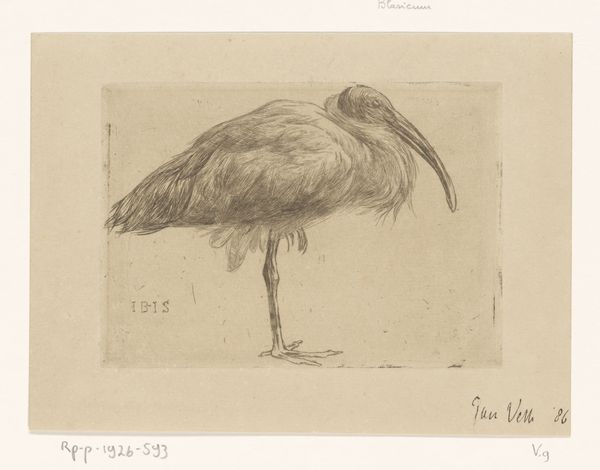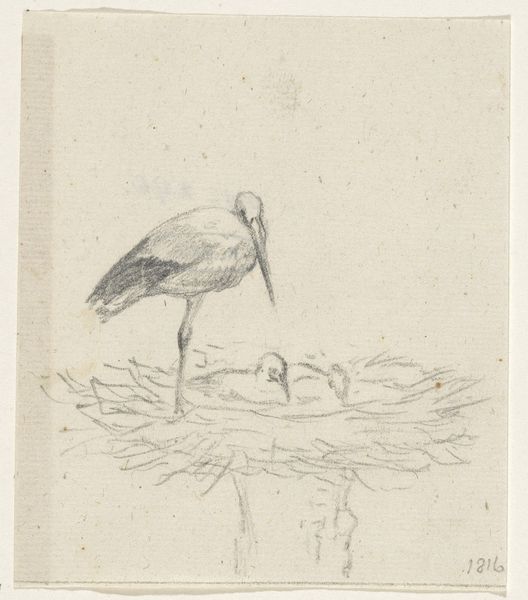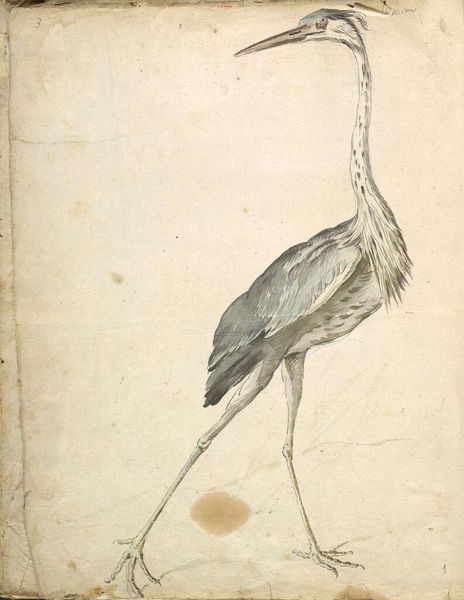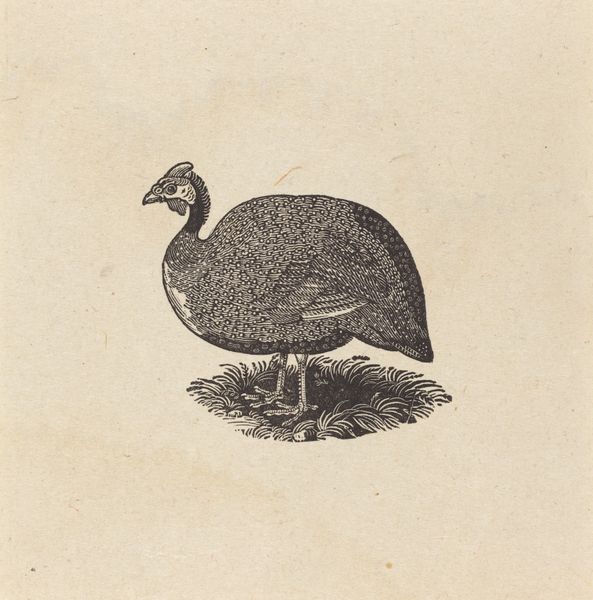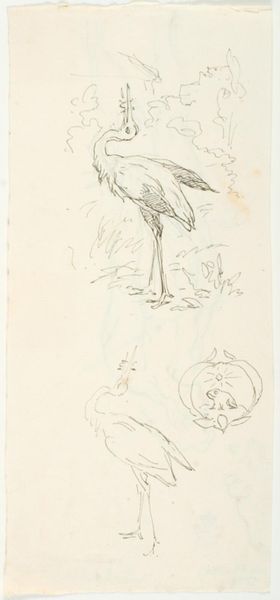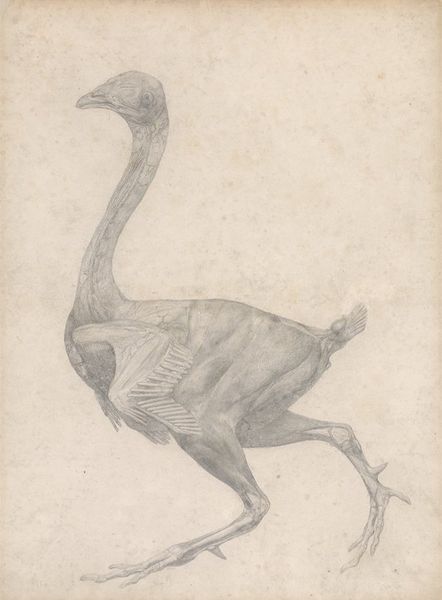
drawing, paper, pencil
#
drawing
#
pencil sketch
#
figuration
#
paper
#
pencil
#
realism
Dimensions: height 179 mm, width 134 mm
Copyright: Rijks Museum: Open Domain
Editor: Here we have "Opgezette ibis," or "Stuffed Ibis," a pencil drawing on paper, dating between 1874 and 1925, by Jan Veth. The texture really jumps out at me; you can almost feel the feathers. What do you make of it? Curator: What I find compelling is to think about the material circumstances of this 'stuffed' ibis. Was it sourced for scientific study, destined to become a museum object? Each stage involves labour, from the acquisition of the ibis itself to the making of the paper and the production of the pencil, raising issues around access and artistic interpretation. Editor: That's a different angle than I expected! So you're thinking about where the ibis came from, how it ended up like this? Curator: Exactly. And beyond that, think about Veth’s access to art materials and to this ‘subject.’ Pencil and paper – humble materials perhaps, but whose production involved extensive labour and complex global networks. What does that say about the artistic process during the period? Editor: So, not just a simple drawing of a bird, but a point of connection to a much bigger world of making and trading... Curator: Precisely. Consider the societal value then placed on accurate naturalistic drawings, think of it as documenting materials obtained at the cost of labour. Editor: I guess I never thought about a drawing in terms of global production before! I’ll definitely look at art with a more critical eye toward its materials from now on. Curator: Indeed. The artist’s hand is guided by more than just skill; it’s connected to a complex web of production.
Comments
No comments
Be the first to comment and join the conversation on the ultimate creative platform.
